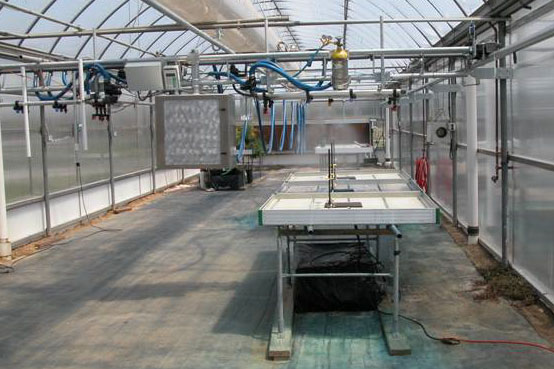| Investigation of drift reduction potential with air-induction nozzles and conventional nozzles |

|
H. Zhu, R.C. Derksen, C.R. Krause, USDA-ARS Application Technology Research Unit
H. Guler, H. E. Ozkan, The Ohio State University
L.E. Bode, University of Illinois
Hypothesis:
The spray performances (deposition, coverage and drift reduction potential) of air induction nozzles can be achieved with conventional nozzles by lowering the operating pressure
 Droplet size analysis using a laser imaging system |
Facts of air induction nozzles:
|
 Controlled spray boom and target system for evaluation of spray coverage |
 Wind tunnel used to evaluate nozzle drift reduction potential |
| Results: With the same orifice size and flow rate, air induction nozzles and conventional flat fan nozzles have no differences in drift reduction, but air induction nozzles use much higher pressure than the conventional nozzles |
|
For more information contact:
Heping Zhu
